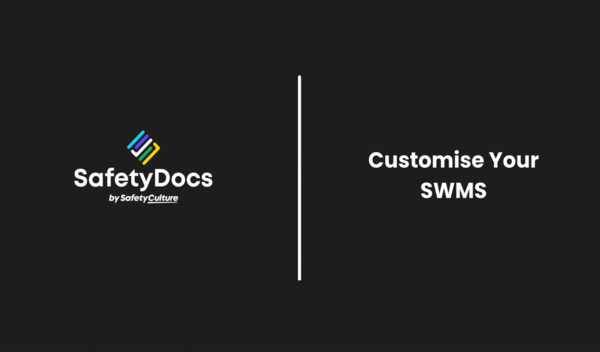Pipework Mechanical Safe Work Method Statement
- Instant Document Delivery via Email.
- Add to your existing management system.
- Can assist in ensuring workers are adequately trained.
- Customisation instructions provided.
- Microsoft Word Format (Fully editable).
- Only pay once (no subscriptions required).
Pipework Mechanical Safe Work Method Statement (SWMS)
This Pipework Mechanical Safe Work Method Statement (SWMS) covers hazards and controls associated with the safe installation and fitting of mechanical pipework and is suitable for fire system installation, condenser water pipework, chilled water pipework etc.
Job Steps Covered in Pipework Mechanical SWMS
- Training on Health Effects Associated with RCS: Outlines importance of educating workers on identifying and mitigating RCS dust exposure.
- Planning: Involves gathering information on asbestos-containing materials and a dedicated Asbestos SWMS is in place if needed.
- Arrival On-site & Assess On-site Conditions: Includes vehicle positioning, site-specific inductions, and hazard assessments.
- Check Weather Conditions & Prepare: Addresses working in extreme weather conditions and implementing appropriate measures.
- Work Area Set-up: Focuses on securing the work area, including barricading and signage.
- Environment: Covers noise, waste management, and environmental protection measures.
- Housekeeping: Emphasises maintaining a clean and safe work area to prevent slips, trips, and falls.
- Manual Tasks: Discusses safe handling and movement of materials to prevent musculoskeletal injuries.
- Materials Delivery: Outlines safe delivery and unloading practices to avoid accidents.
- Working with Powered & Non-powered Tools: Covers safe tool use, including electrical safety and fire prevention.
- Hazardous Substance/Chemical Use: Details safe handling and use of hazardous substances.
- Working at Height: Outlines measures for safely working at height, including ladder and scaffold safety.
- Running Pipework: Discusses planning the route of pipework and safety considerations.
- Connecting Valve Sets & Pipework, Cutting & Welding: Addresses fire safety and hazardous atmosphere precautions.
- Pipework Installation via Crane Lift: Covers crane operation safety and establishing exclusion zones.
- Commission System: Involves pressure testing and system commissioning safety measures.
- Fuelling On-site: Details safe refuelling practices to prevent fires and exposure.
- On Completion: Includes securing the site and equipment after completion of work.
- Emergency Response: Outlines a response for handling injuries, environmental damage, and other emergencies.
Each purchase of our SWMS comes with a complimentary copy of the Legislation & Codes of Practice Reference List, valued at $19.95. This valuable resource provides an up-to-date overview of relevant laws and standards, further supporting your compliance efforts.
Key Features of the SWMS
- Comprehensive Risk Management: Outlines controls for managing high-risk construction work, including fall prevention and hazardous substance handling.
- Regulatory Compliance: Adherence to Australian legislation for workplace safety.
- Emergency Response: Includes an emergency response for quick and effective action in case of incidents.
Who is it Suitable For?
This document is essential for businesses and contractors involved in mechanical pipework installations, including those working on fire system installations, condenser water pipework, and chilled water pipework. It's also valuable for safety officers and site supervisors overseeing these activities.
Ensure your team is equipped with the knowledge and tools to maintain a safe work environment. Get your copy today and commit to workplace safety excellence.
- Instant Document Delivery via Email.
- Add to your existing management system.
- Can assist in ensuring workers are adequately trained.
- Customisation instructions provided.
- Microsoft Word Format (Fully editable).
- Only pay once (no subscriptions required).
Pipework Mechanical Safe Work Method Statement (SWMS)
This Pipework Mechanical Safe Work Method Statement (SWMS) covers hazards and controls associated with the safe installation and fitting of mechanical pipework and is suitable for fire system installation, condenser water pipework, chilled water pipework etc.
Job Steps Covered in Pipework Mechanical SWMS
- Training on Health Effects Associated with RCS: Outlines importance of educating workers on identifying and mitigating RCS dust exposure.
- Planning: Involves gathering information on asbestos-containing materials and a dedicated Asbestos SWMS is in place if needed.
- Arrival On-site & Assess On-site Conditions: Includes vehicle positioning, site-specific inductions, and hazard assessments.
- Check Weather Conditions & Prepare: Addresses working in extreme weather conditions and implementing appropriate measures.
- Work Area Set-up: Focuses on securing the work area, including barricading and signage.
- Environment: Covers noise, waste management, and environmental protection measures.
- Housekeeping: Emphasises maintaining a clean and safe work area to prevent slips, trips, and falls.
- Manual Tasks: Discusses safe handling and movement of materials to prevent musculoskeletal injuries.
- Materials Delivery: Outlines safe delivery and unloading practices to avoid accidents.
- Working with Powered & Non-powered Tools: Covers safe tool use, including electrical safety and fire prevention.
- Hazardous Substance/Chemical Use: Details safe handling and use of hazardous substances.
- Working at Height: Outlines measures for safely working at height, including ladder and scaffold safety.
- Running Pipework: Discusses planning the route of pipework and safety considerations.
- Connecting Valve Sets & Pipework, Cutting & Welding: Addresses fire safety and hazardous atmosphere precautions.
- Pipework Installation via Crane Lift: Covers crane operation safety and establishing exclusion zones.
- Commission System: Involves pressure testing and system commissioning safety measures.
- Fuelling On-site: Details safe refuelling practices to prevent fires and exposure.
- On Completion: Includes securing the site and equipment after completion of work.
- Emergency Response: Outlines a response for handling injuries, environmental damage, and other emergencies.
Each purchase of our SWMS comes with a complimentary copy of the Legislation & Codes of Practice Reference List, valued at $19.95. This valuable resource provides an up-to-date overview of relevant laws and standards, further supporting your compliance efforts.
Key Features of the SWMS
- Comprehensive Risk Management: Outlines controls for managing high-risk construction work, including fall prevention and hazardous substance handling.
- Regulatory Compliance: Adherence to Australian legislation for workplace safety.
- Emergency Response: Includes an emergency response for quick and effective action in case of incidents.
Who is it Suitable For?
This document is essential for businesses and contractors involved in mechanical pipework installations, including those working on fire system installations, condenser water pipework, and chilled water pipework. It's also valuable for safety officers and site supervisors overseeing these activities.
Ensure your team is equipped with the knowledge and tools to maintain a safe work environment. Get your copy today and commit to workplace safety excellence.


